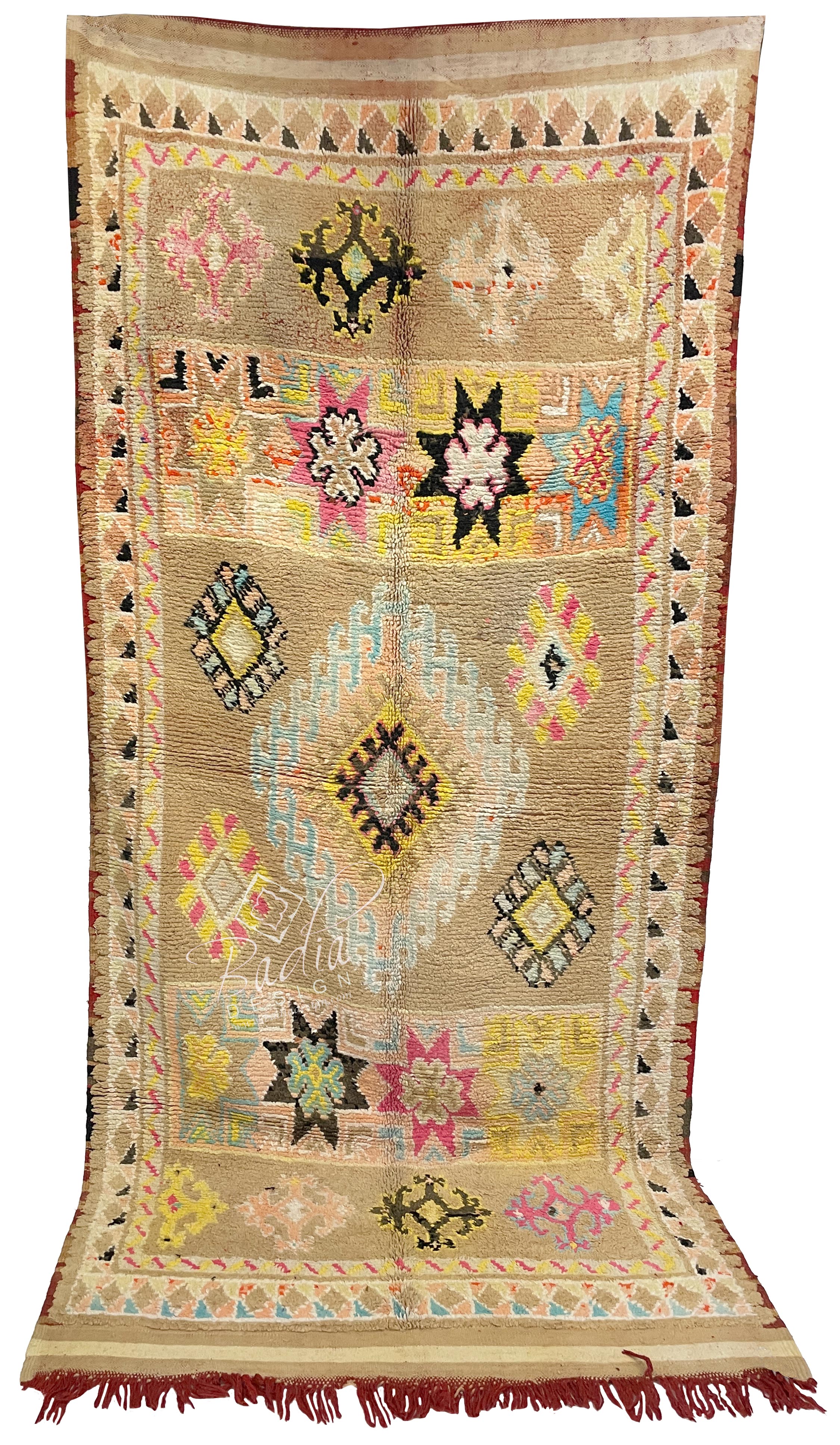Moroccan Berber Rugs: A Fusion of History, Artistry, and Timeless Elegance
These rugs have enchanted people across the globe with their deep cultural roots, intricate craftsmanship, and versatile aesthetics. Whether you are furnishing a cozy living room, a modern office space, or a luxurious hotel, these rugs serve as more than just functional items—they are pieces of art with a story to tell. This guide delves into the rich origins of Moroccan Berber rugs, the detailed artistry involved in their production, their renowned durability, and creative ways to incorporate them into today’s interiors.
The origins of Moroccan Berber rugs can be traced back thousands of years to the Berber tribes of North Africa. The Berbers, with their rich cultural heritage, developed rug-weaving techniques to meet the demands of their migratory way of life and varied environmental conditions.
Each Berber rug tells a story, often woven into the fabric that reflect the heritage of its creators. These symbols frequently represent themes of safety, growth, or nature, making each rug a highly meaningful creation. Originally, these rugs were crafted for utilitarian purposes, such as providing warmth during harsh winters in the Atlas Mountains or acting as soft bedding in arid desert regions.
In the mid-20th century, Moroccan Berber rugs gained global popularity when prominent designers like Le Corbusier and Frank Lloyd Wright featured them in their iconic designs. Today, their timeless aesthetic and cultural richness make them a top pick for interior designers and collectors alike.
The production of Moroccan Berber rugs is an elaborate art form handed down through generations. It represents a harmonious fusion of ancestral knowledge and meticulous technique.
These rugs are made from high-quality natural fibers, valued for their durability and softness. Wool is especially prized for its soft texture, resilience, and ability to retain warmth. Artisans often hand-spin the wool, giving each rug a unique look and feel.
Weaving these rugs is a time-intensive process, requiring great patience and effort on traditional looms. The knotting style, from Beni Ourain’s casual elegance to Azilal’s tighter weaves, impacts both durability and design.
Natural dyes derived from organic sources are used to create the vibrant colors found in many Berber rugs. Neutral shades dominate Beni Ourain designs, while click here brighter Azilal and Boucherouite pieces feature striking colors like red, blue, and yellow.
The longevity of these rugs is one of their biggest strengths. This makes them a smart choice for both residential areas and commercial spaces.
The use of premium materials ensures that Berber rugs retain their integrity over years of use. Wool’s natural flexibility and resistance to stains make it a ideal choice for lasting rugs.
Taking care of these rugs is straightforward. Routine vacuuming and periodic professional care can preserve their beauty for decades.
Tips for Styling Moroccan Berber Rugs in Modern Homes
Incorporating Moroccan Berber rugs into contemporary interiors is easier than you might think. These rugs' adaptability allows them to suit various aesthetics, including minimalist and bohemian styles.
1. Create a Focal Point in the Living Room
A large Beni Ourain rug can serve as the focal point of your living area. Its neutral colors and simple geometric patterns can tie together various design elements while adding a sense of warmth and comfort.
2. Add Color to Neutral Spaces
In minimalist or neutral spaces, a colorful Azilal or Boucherouite rug can add a bold, eye-catching accent. These rugs work particularly well in neutral-toned rooms, where they serve as a focal point.
3. Combine Rugs for Depth and Style
To create a warm, layered look, place a smaller Berber rug atop a larger rug made from natural fibers like jute or sisal. This pairing enhances texture and emphasizes the unique patterns of the Berber rug.
4. Enhance Workspace Aesthetics
Moroccan Berber rugs are perfect for adding elegance and warmth to professional spaces, including offices and lounges. Their handmade quality conveys a sense of luxury and authenticity.
5. Display Moroccan Berber Rugs as Decorative Art
Some Moroccan Berber rugs are so visually stunning that they deserve to be displayed as art. Hanging a rug on the wall can add a unique touch to your home or business, showcasing the craftsmanship and cultural heritage of the piece.
Reasons to Invest in Moroccan Berber Rugs
For both homeowners and businesses, Moroccan Berber rugs represent a blend of practicality, aesthetics, and cultural significance. Their durability ensures a long lifespan, while their timeless designs can adapt to changing trends and tastes.
Eco-Friendly and Ethical Craftsmanship
Many Berber rugs are crafted using eco-friendly and sustainable practices. By investing in these rugs, you’re not only enhancing your space but also supporting traditional artisans and their communities.
Increasing Value Over Time
Authentic Moroccan Berber rugs often appreciate in value over time, especially vintage or rare pieces. They are both functional decor and collectible assets.

Comments on “Moroccan Rug Store Los Angeles”